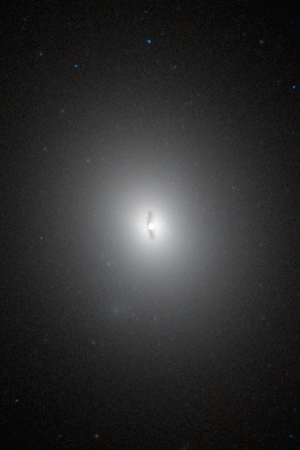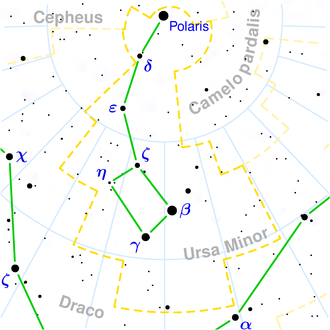NGC 6251
| Galaxy NGC 6251 |
|
|---|---|

|
|
| The galaxy NGC 6251 imaged by the Hubble Space Telescope . The dust disk around the galaxy center can be seen. | |
| AladinLite | |
| Constellation | Little Bear |
|
Position equinox : J2000.0 , epoch : J2000.0 |
|
| Right ascension | 16 h 32 m 32.0 s |
| declination | + 82 ° 32 ′ 16 ″ |
| Appearance | |
| Morphological type | E; LERG / Sy2 |
| Brightness (visual) | 12.9 mag |
| Brightness (B-band) | 13.9 likes |
| Angular expansion | 1.8 ′ × 1.5 ′ |
| Position angle | 36 ° |
| Surface brightness | 14.0 mag / arcmin² |
| Physical data | |
| Redshift | 0.02471 ± 0.00007 |
| Radial velocity | (7408 ± 22) km / s |
|
Stroke distance v rad / H 0 |
(339 ± 24) x 10 6 ly (103.9 ± 7.3) Mpc |
| history | |
| discovery | William Herschel |
| Discovery date | January 1, 1802 |
| Catalog names | |
| NGC 6251 • UGC 10501 • PGC 58472 • CGCG 367-013 • MCG + 14-08-10 • 2MASX J16323175 + 8232165 • GC 4253 • H III 974 • | |
NGC 6251 is the name of an elliptical galaxy that is about 339 million light years from the Milky Way . Is known NGC 6251 as radio galaxy , a super-massive in the black hole with a mass of about 6 x 10 8 solar masses located. This can be seen in the ultraviolet image of Hubble (white and blue area in the center).
NGC 6251 was discovered on January 1, 1802 by the German-British astronomer Wilhelm Herschel .
Web links
- Hubble Space Telescope
- The Center of NGC 6251 is Glowing - Astronomy Picture of the Day of September 12, 1997.
- The XMM-Newton view of NGC 6251
